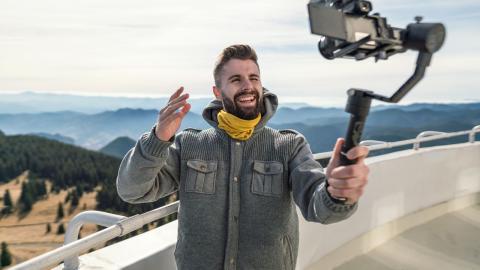A new study from Georgia Tech's School of Economics is the first to tie high levels of social media exposure to increased visitors to the U.S. National Parks — and the increased crowding and ecological damage they bring with them.
Social media is a powerful influence on our lives and our culture, driving decisions from what we eat for lunch to where we go on vacation. Now, a new study from Georgia Tech's School of Economics is the first to tie high levels of social media exposure to increased visitors to the U.S. National Parks — and the increased crowding and ecological damage they bring with them.
"There's been a general idea that social media exposure matters for visitation, but this research shows that it matters to a very strong degree," said Casey Wichman, an associate professor of economics and the author of the study, published in April in the Proceedings of the National Academy of Sciences. "It's one of the main drivers of the huge increase in visitation to national parks."
However, he says, the overall picture is much more nuanced than it’s often portrayed in media accounts.
Wichman found that parks with high social media exposure saw a 16 to 22% increase in visitors compared to locations that received less attention on social media. The growth began in 2013 when Instagram and Twitter started to gain popularity.
While well-known parks such as Yosemite, Grand Canyon, and Yellowstone saw big jumps tied to social media exposure, smaller, less well-known properties also saw significant jumps. For example, the number of travelers to Lake Clark National Park and Preserve in Alaska increased by more than 180%.
Parks in the Southeast saw little change on average because a decrease at parks in Florida and the Carolinas offset an increase at Great Smoky Mountains National Park, the nation’s most visited national park. The biggest increases on a percentage basis occurred in the Western U.S., particularly in Alaska, the Rocky Mountain region, and Utah.
"It seems like there may be some reshuffling of where people go because there are a lot of parks that don't see increases in visitation despite being pretty cool, interesting parks in similar areas," Wichman said. “But people end up seeing the parks with higher exposure online and are more likely to get pushed into visiting them."
Wichman used five measurements to create an index of social media exposure: Instagram followers, Instagram mentions, Twitter followers, Twitter mentions, and the total number of likes and retweets on Twitter. Then, he ranked the parks based on the average of these five metrics, with a lower rank indicating greater social media exposure.
"Social media serves as advertising for parks in a way that's targeted to an individual's network," Wichman said. "However, not all exposure increases visits — it has to be good exposure."
Wichman also looked at the type of posts and their effects, finding that tweets with photos or videos drove increased visits in the year after they were posted, while tweets with negative sentiment decreased visits over the following year.
The increase in visitation due to social media is a double-edged sword, Wichman says. More visitors can result in overcrowding, frustrating traffic jams, and difficulty accessing campsites or other amenities. More traffic also means more pollution. But tourists also pay entrance fees and buy things at gift shops, restaurants and other concessions — revenue that can help support park operations, wildlife conservation efforts, and local economies. And, those pretty pictures of nature can also get people excited about going outside, which has its own benefits for travelers, Wichman said.
"If you look at news articles, social media is largely pitched as driving overcrowding and being a negative thing. But it's not clear to me that that's the case,” he said. “Yes, we spend a lot of time on our phones, especially younger demographics, but this also suggests that social media can actually get us outside more. I don't know if it's good or bad, but it's much more nuanced than many sensationalist stories have made it out to be."
Wichman’s paper, “Social Media Influences National Parks Visitation,” was published in April 2024 in the Proceedings of the National Academy of Sciences. It is available at https://doi.org/10.1073/pnas.2310417121
